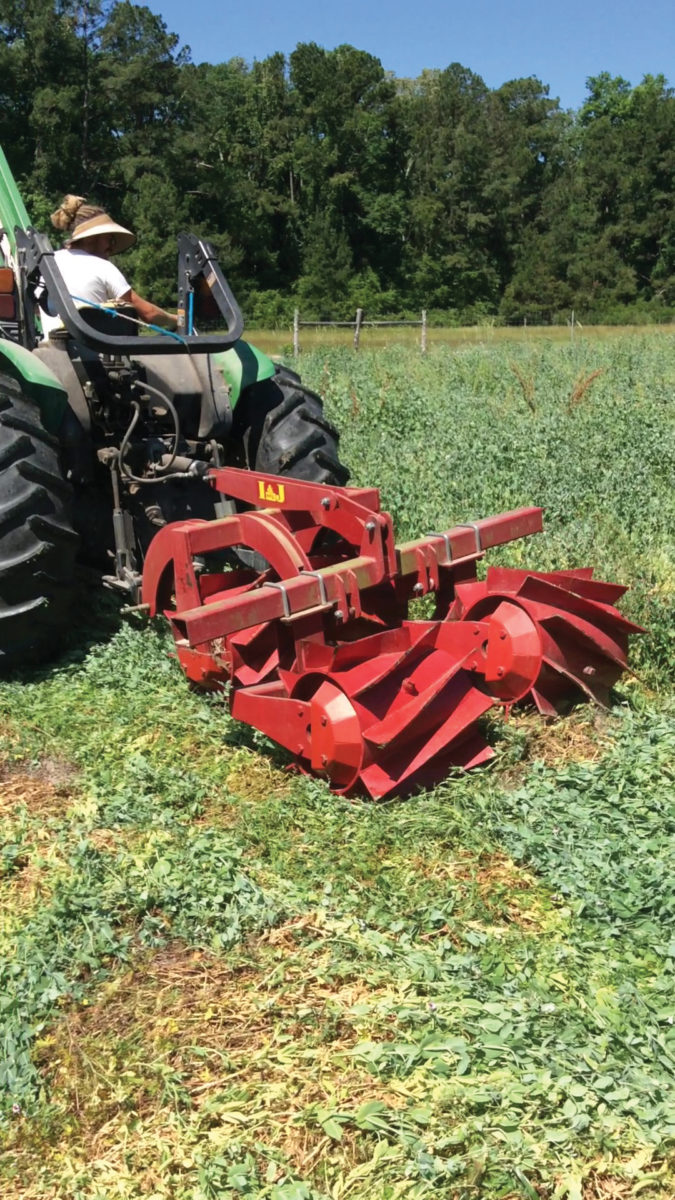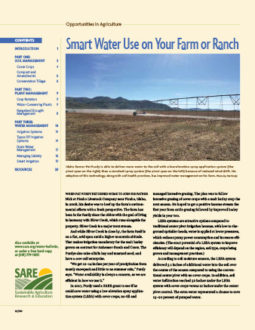In the coastal region of South Carolina where Mary Connor runs Three Sisters Farm with her two sisters, practices that improve soil health and water management are critical but complicated. Because of tropical weather conditions that often bring extreme rains, they need to grow their vegetable crops on raised beds on their 90-acre farm. This makes it difficult to practice no-till, even though conservation tillage and cover crops are needed both to improve organic matter in their sandy soils and to conserve moisture during periods of drought.

“Our high annual rainfalls typically occur in concentrated time intervals. We can get eight inches of rain over a 48-hour timeframe,” says Connor. “Raised beds help prevent complete water saturation of plants. But converting to no-till in the beds has many obstacles in the coastal plain.”
To begin with, most no-till equipment is not designed for raised beds. And sandy soils in the coastal plains are susceptible to losing nutrients and carbon in the soil structure. To enhance moisture retention, humus in the soil must be retained through something like cover crops.
With funding from a SARE grant, Connor tested a no-till roller-crimper that was modified to work on the raised beds of her Bluffton, S.C., farm. Her aim was to manage the impacts of frequent flooding and drought, as well as to enhance and improve soil health, using the combination of no-till, cover crops and tarping. Her approach to improving water management and soil health combined an Austrian winter pea cover crop with surface mulch to lower water loss via evapotranspiration.
Using a roller crimper in no-till, raised-bed applications is a relatively new way to terminate cover crops. It is designed to kill cover crops by crimping but must be timed properly to prevent cover crops from regrowing. Once the family terminates their Austrian winter pea cover crop, they tarp for a month to ensure die down. This allows clean transplants. The cover crop mulch provides weed suppression and moisture retention for vegetable crops.
The water retention of our soil has noticeably improved since we started this process. This is a small farm, so we do not have any water meters. But I can tell you from walking the farm a couple of times a day, there is a visual difference. You can feel the moisture when you handle the soil even during those periods when we may go two or three weeks without rain.”
Mary Connor, Bluffton, S.C.
In addition to cover crops, Connor uses tarping to retain soil moisture and to manage problematic, often herbicide-resistant, weeds like nutsedge. Tarps reduce the time spent weeding by hand by about 250 labor hours, which represents a savings of $4,000–$6,000. Additionally, she puts silage tarps on raised rows until planting, keeping topsoil in place and weed seeds out. Connor has observed higher yields with these tactics as well as reduced labor for weeding.
Other soil and water conservation efforts include getting double-ground leaf and grass mulch from a large residential resort development on nearby Hilton Head Island, and using drip irrigation and micro-irrigation as needed for lettuce and carrots. The water comes from an onsite well.
Soils are tested every five years. Connor has been able to reduce fertilizer use with a documented increase in organic matter and Cation Exchange Capacity (CEC). CEC is used as a measure of soil fertility. A higher CEC reflects well-humified organic matter and clay minerals.
“By building organic matter, soil characteristics like waterholding content and water infiltration have improved,” states Connor. “CEC was raised to 9, where typically we would have only a range of 3–6 on most areas. That is as dramatic as if we added high-quality compost to our soil.”
Temperature variations that happen more frequently are another concern for the coastal farm. Connor has moved frost-sensitive crops like lettuce into the farm’s hoop house for production and has switched to more weather-hardy plantings outside, such as bok choy, spinach, broccoli, collards and carrots.
And while Connor says other farmers can replicate her work, she cautions not to expect overnight results. “You have to be willing to adapt to your conditions,” she says. “This is a unique area, so what works elsewhere may not work here, and what works here may not work in other regions.”
